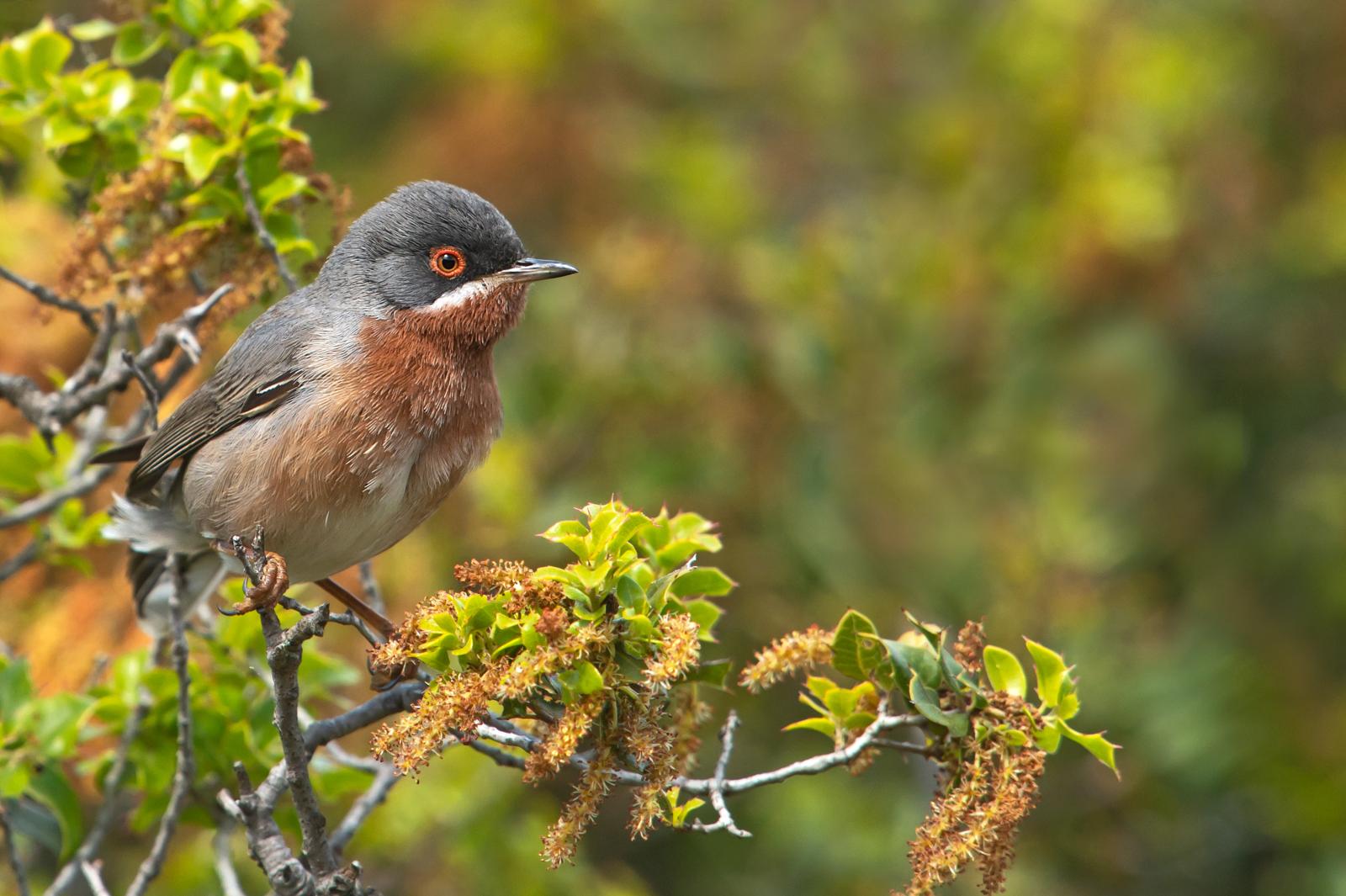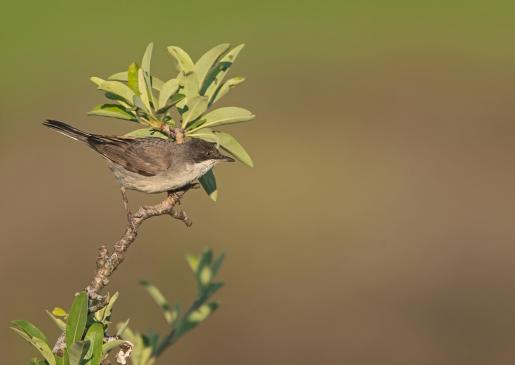Identification
A relatively small bird, with the male having a blue-grey upper part and head, brown wing with a distinctive and strong white stripe -like a moustache!- on the sides of the face. The underparts are reddish-orange in front, up to the face, and whitish lower towards the belly area, with pale pink on the sides. The bright red eye ring (bare skin around the eye) is also characteristic. The female has less intense gray on the upper part and no intense orange tint on the lower part. This one also has a red eye-ring but it has a whitish ring around it.
The beak is grey and of medium length and the colour of the legs is pinkish-brown.
Distribution - Habitat
Its range (breeding) is almost exclusively limited to the Eastern Mediterranean region: northeastern Italy, the Balkans up to the western coastal parts of Turkey. It overwinters in the central and eastern sub-Saharan region (from E Mali to NW Sudan).
It prefers dry open areas covered with dense and tall maquis vegetation (the typical Mediterranean shrublands!), sometimes with scattered trees, broadleaf forests (oak) and olive groves. We will find it from sea level to an altitude of 1,700 m (sometimes up to 2,200 m).
Interesting Information
- From his name alone (cantillans from cantio, singing in Latin) we understand that he is a great singer! And indeed he has a loud rattling chant that he likes to give from the tops of the tallest bushes in his area.
- It feeds mainly on insects (crickets, phasmids, semiptera, scissors, etc.), but also spiders and, outside the breeding season, fruits such as blackberries, especially in the autumn season when it needs to store fat to migrate to Africa.
- In some very hot areas, parents have been observed feeding blackberries to their chicks, probably to help them cope with the high water losses.
- It usually spawns twice a year in a well-formed bowl of grass, fine roots and leaves lined internally with softer materials such as grasses and fur, and is usually placed inside a bush or tree up to about a metre above the ground. Both leaves build the nest but the male is responsible for shaping it while the female is responsible for the inner lining!
- She lays 3-5 eggs at a time both parents hatch for about 12 days. The chicks, after being cared for by both parents are ready to leave the nest 10-12 days later.
- In May 2020 the former Eastern subalpine warbler was split into two new species, the Eastern (Curruca cantillans) and Western (C. iberiae) subalpine warbler, with the latter spreading to the NW African coast, the Iberian Peninsula and Italy.
- As fires in Mediterranean shrublands are a very common phenomena, the Eastern subalpine warbler is extremely well adapted to this and even prefers the middle stages of growth in these shrublands after a fire.
- There is a clear, although small, shift in its range towards the north: it gains areas at the northern limit of its distribution while losing others in the south; this can be explained by its response to climate change!



